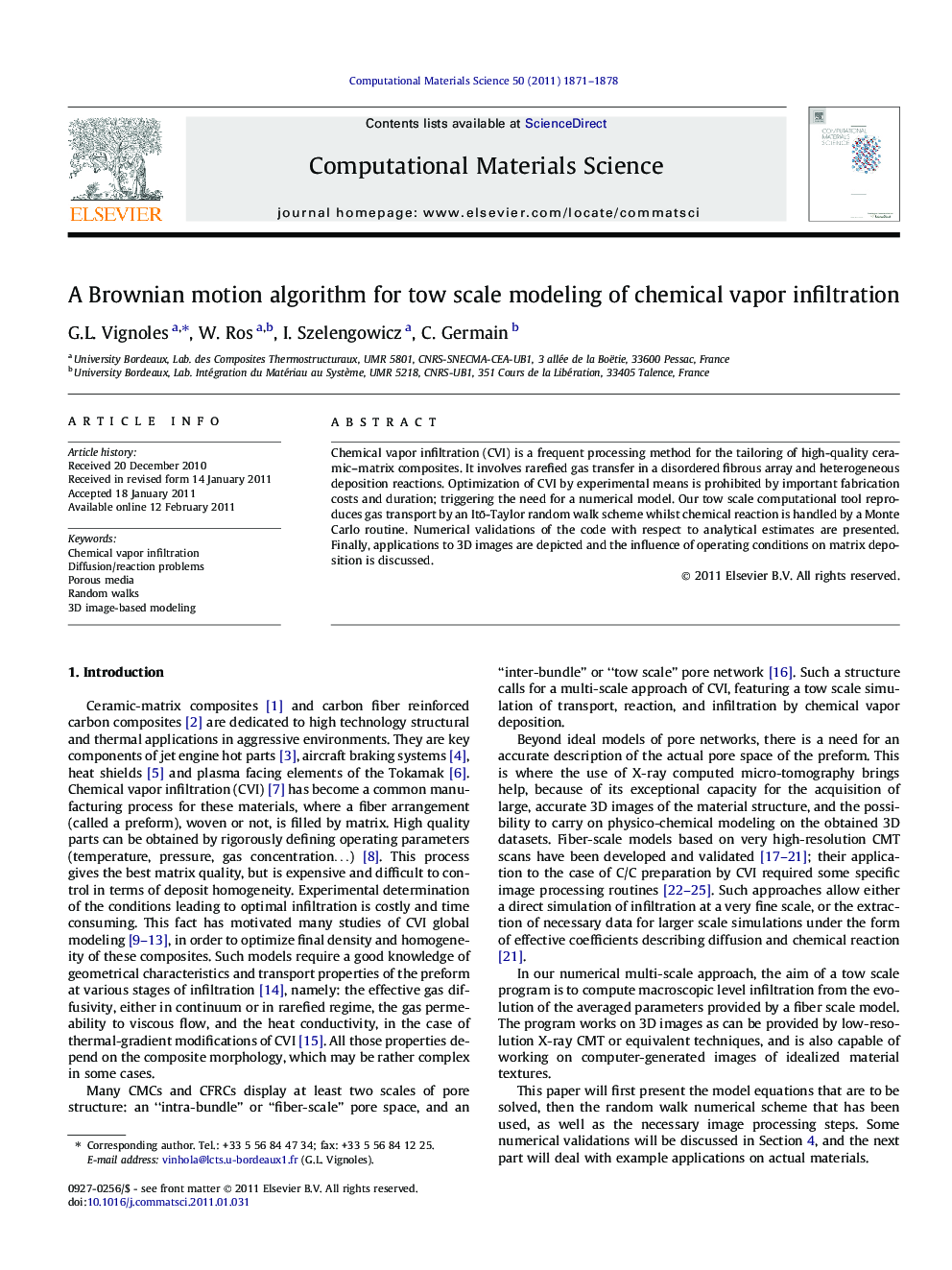| Article ID | Journal | Published Year | Pages | File Type |
|---|---|---|---|---|
| 1562663 | Computational Materials Science | 2011 | 8 Pages |
Chemical vapor infiltration (CVI) is a frequent processing method for the tailoring of high-quality ceramic–matrix composites. It involves rarefied gas transfer in a disordered fibrous array and heterogeneous deposition reactions. Optimization of CVI by experimental means is prohibited by important fabrication costs and duration; triggering the need for a numerical model. Our tow scale computational tool reproduces gas transport by an Itō-Taylor random walk scheme whilst chemical reaction is handled by a Monte Carlo routine. Numerical validations of the code with respect to analytical estimates are presented. Finally, applications to 3D images are depicted and the influence of operating conditions on matrix deposition is discussed.
Research highlights► Simultaneous infiltration and seal-coat deposition. ► The model involves gas diffusion and reaction, volumetric and surface deposition. ► It applies to large 3D images of fibrous media. ► The code is validated on cases with analytical estimates. ► Influence of diffusion/reaction competition on deposit morphology.
